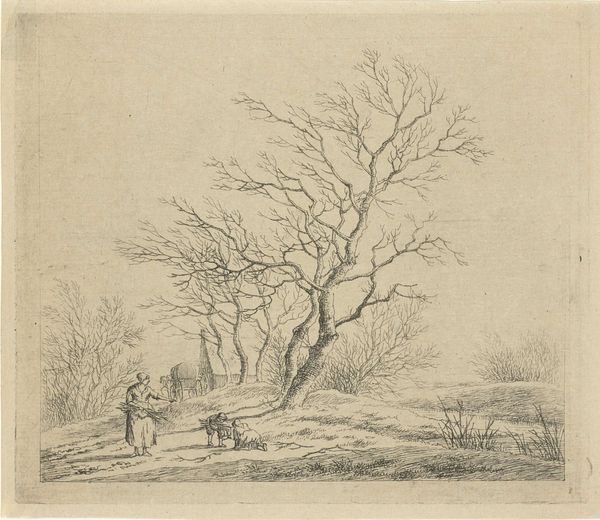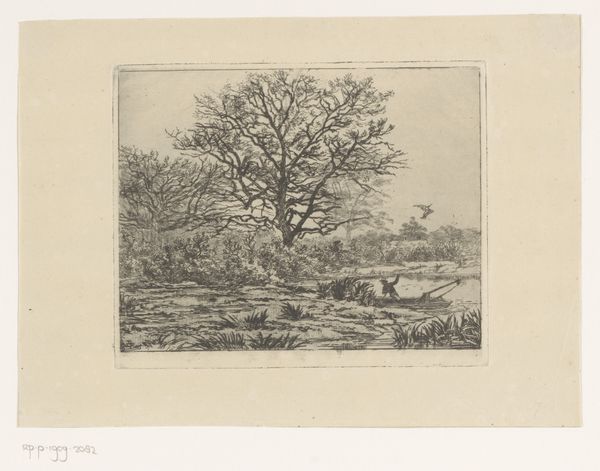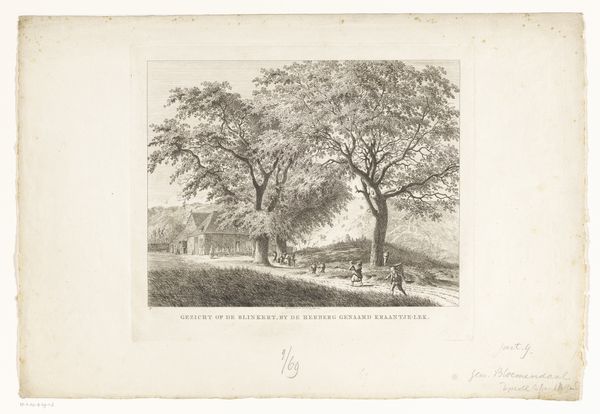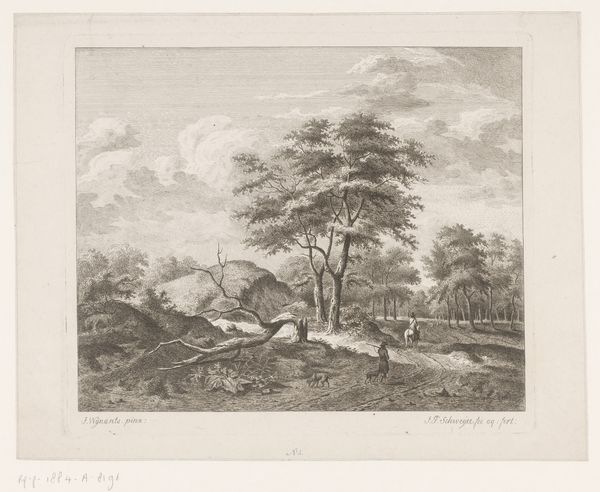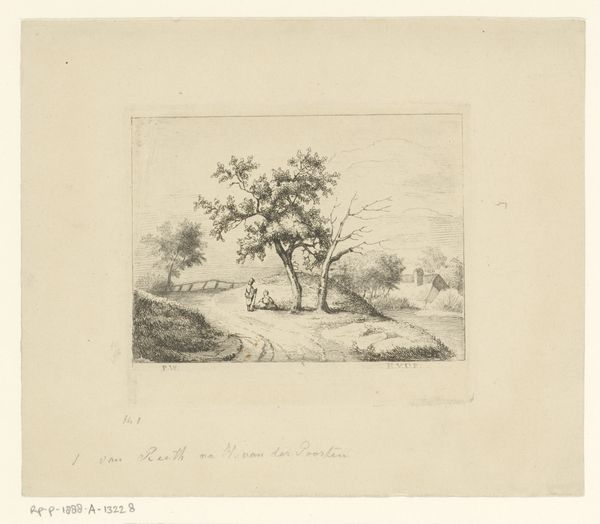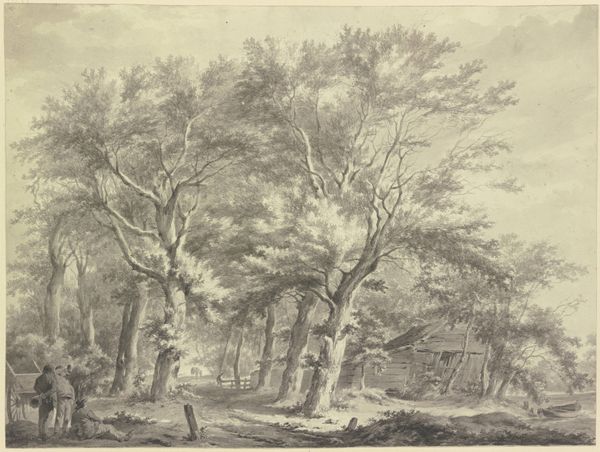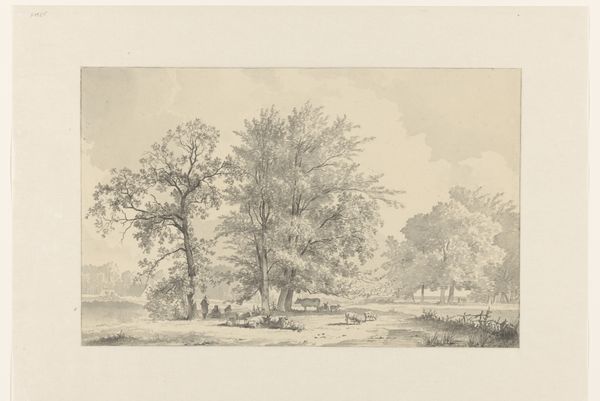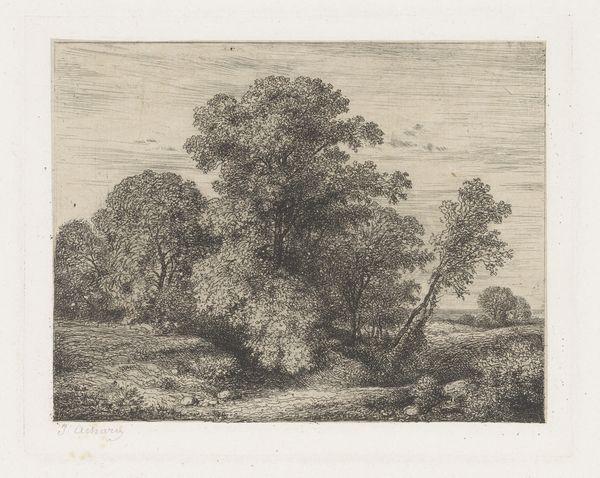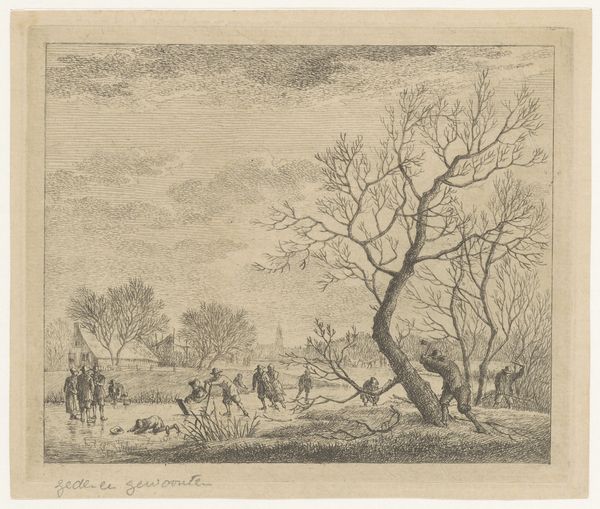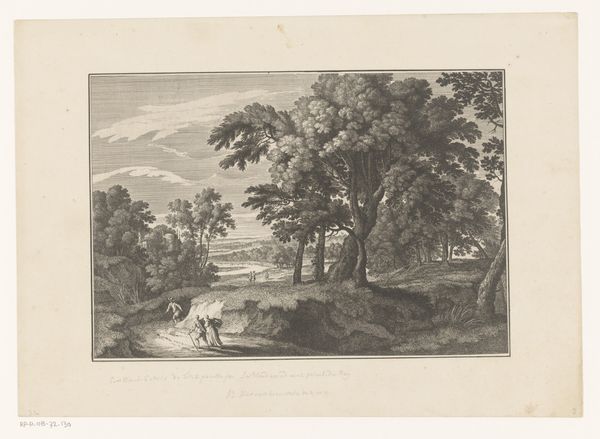
Dimensions: height 144 mm, width 169 mm
Copyright: Rijks Museum: Open Domain
Curator: This etching by Johannes Janson, titled "Februari: landschap met houtsprokkelaars," dates back to 1783 and is part of the Rijksmuseum collection. Editor: It strikes me as stark. The bare trees reaching towards a heavy, textured sky evoke a real sense of winter's desolation and hardship. Curator: Indeed, Janson's choice of February as the subject resonates with the historical realities of the working class in the late 18th century. Fuel was scarce and gathering wood was necessary for survival. This isn't just landscape; it's a depiction of labor and class. Editor: You see the woman collecting sticks and you immediately understand, don't you? The wood, the stooped figure in the middle -- all these resonate on a symbolic level: hardship, winter, but also maybe the perseverance required to face it. Curator: Absolutely. Moreover, note how Janson positions them low in the composition, dominated by the landscape. This can be seen as reflecting their relatively powerless position within society. There’s also a contrast with the rising ideas of the Enlightenment at the time and its effect on these rural communities. Editor: The landscape is so dominant, almost overwhelming. Even though this is etching, so black and white, it feels Romantic through its emphasis on the power of nature. There is an honesty here. The leafless trees are repeated to give visual rhythm and continuity. I think this speaks to broader themes: human vulnerability in the face of larger forces. Curator: And the broader political landscape of the era—colonial tensions, revolutionary sentiment brewing—were reshaping society from the ground up. The figure may stand as a reminder of pre-industrial modes of being during an era that will change these drastically. The image is more than a quiet moment. It is the representation of a time of flux. Editor: Precisely, those visual cues become coded messages. You have prompted me to understand it as part of history and its cultural contexts. Curator: Thinking through such lenses offers ways of analyzing an artwork. Editor: Looking through iconography allows you to access history from a human standpoint.
Comments
No comments
Be the first to comment and join the conversation on the ultimate creative platform.

